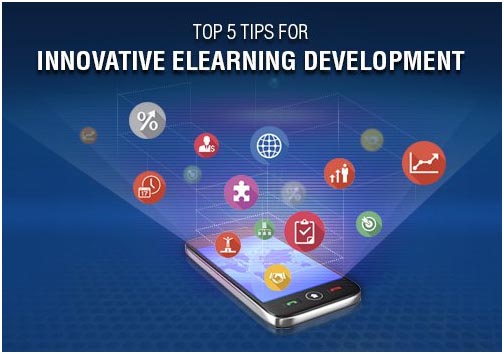
The purpose of learning and development (L&D) in most organizations is to upskill or reskill employees, focusing on delivery and consumption. However, L&D is now more critical than ever for the survival and growth of an organization and it must refocus on improving business performance.
Situational Analysis
With the awakening of many business leaders to the transformational power inherent in learning and development, L&D leaders must reevaluate their approach, focusing not just on upskilling and reskilling employees but also on transformational practices that drive business performance.
COVID-19 amplified this need and awareness. In March of 2020, many organizations had to shift their products, product development and collaborative models, as well as learning programs to accommodate the pandemic. This revealed the stark contrast that exists between the skills that employees possess today and what they need for future successful business performances. The ability to learn is quickly becoming the most important skill for employee and organizational health.
Building capabilities among employees and bridging skill gaps are both vital factors for developing anti-fragile organizations. Organizations that cannot learn, iterate, evolve, and grow will fail. The pandemic proved that – many organizations that were unable, or unwilling, to change failed. Those that weather the storms are resilient. Those that come out of storms stronger are, what Nassim Taleb calls, “anti-fragile.” Anti-fragile organizations are most successful in the long run because unforeseen and stressful events propel them to improved iterations.
A company’s capacity to learn determines its capacity to adapt and innovate. Innovation is crucial for long-term survival. Jim Mattis, former United States Secretary of Defense, writes about the “three Cs” in his book, “Call Sign Chaos.” The Three Cs are unbendable rules needed for successful business performance in any organization, and the first C is “Competency.”
Organizations must continue to focus on competency, organizationally and individually, to thrive in today’s business environment. Corporate L&D teams are central to the success of competency development, understanding that it’s not an event, but a perpetual process of learning, testing, iterating, applying, evaluating, and then starting all over again.
The Challenge
The challenge now is the disconnect between L&D teams and organizational objectives.
L&D leaders are focused on typical (what Kirkpatrick’s model would call either level one or two) metrics – attendance, reaction, and knowledge comprehension. Unfortunately, this is often the case because L&D leaders are not included in initial enterprise strategic and tactical planning. Goals, timelines, and even budgets are set with no representation from L&D. Instead, L&D teams tend to focus on what has historically been easy to measure: attendance, completions, and satisfaction scores. This needs to change so that what they’re focused on is the enterprise progress on goals, as measured by business metrics and KPIs.
The Solution
As an industry, and as L&D leaders and professionals, it’s time to redefine the purpose of professional learning and development.
The following is a list of things that must be done:
- Learning and development leaders need to redefine their objectives – Those objectives should align to business performance and be defined in those terms. For example, instead of reporting the number of students taught in a particular training initiative, the metrics measured and reported should indicate the improved business performance. This will invariably include times when L&D leaders must admit failure as well as successes. Even that is a success though, because the most important lessons are learned from failure, not success.
- C-suite committees need to leverage L&D teams as the spear’s tip of any change initiative – For effective and transformational change initiatives, employees need to understand not just the what, but the why and how too. With that context, employees can focus on their role and what needs to change. They can apply new knowledge in creative and innovative ways to solve problems and overcome challenges.
- While aligning to enterprise goals and strategies, L&D teams should focus on the basics of effective L&D programs – information in the time of need, in the flow of work, that’s easily accessible. The legendary NFL coach, Bill Walsh, encouraged his players to focus on the fundamentals of the game, reminding them that if they did, the score would take care of itself. It’s the same in L&D: If training teams focus on the most effective solutions, improved and enhanced business outcomes will follow.
- L&D leaders need to align their tactics and goals to organizational strategies. Additionally, they should incorporate the business metrics and KPIs used by organizational product and business leaders. Training teams should align the impact of trainings on business goals – so that they measure increased sales, enhanced quality statistics, or decreased calls to customer service, and increased net promoter scores. These are examples of measures that assess the impact training has on business performance.
- L&D programs should also be evaluated by progress on leading KPIs. These should include innovative iterations (failed and successful), intersecting collaborative efforts, as well as quickly evolving production and diffusion of effective practices and processes.
- Finally, L&D teams must implement the learn, apply and practice, feedback loop. This creates a space for employees to continuously change their business performance in the right way, instead of falling into ineffective or inefficient practices.
Parting Thoughts
While the task of upskilling and reskilling employees continues to be important, it’s now crucial for the survival and growth of organizations to leverage corporate learning and development as the tip of the spear in product innovations and market penetration and creation.
L&D needs to refocus on not just traditional delivery and consumption, but instead target business performance improvement by aligning enterprise learning tactics to support corporate goals and strategies and leveraging business KPIs.
Want to learn how to plan and strategize effective training programs for your remote workforce in 2021?



